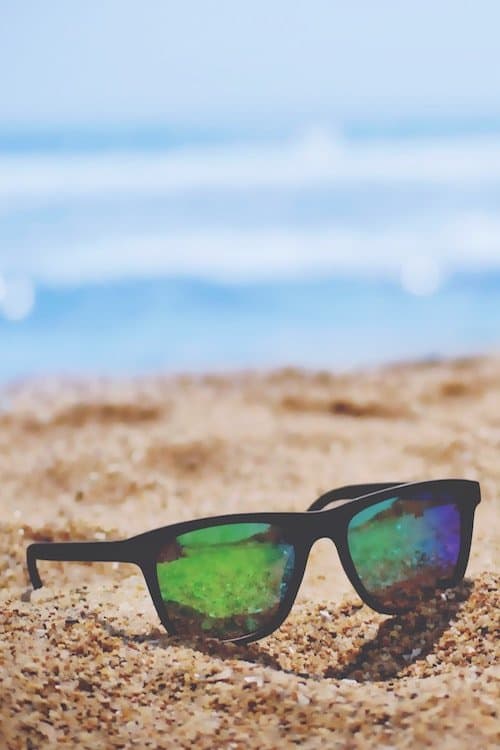Over 40? Here's Why You Probably Need More Vitamin D
Do you get enough vitamin D? You may not be truly deficient, but if you're over 40, overweight, or you don't spend lots of time outside in the sun (without sunscreen) you might have suboptimal levels. That might have some serious consequences for your health. Keep reading to learn why you might need to take a vitamin D supplement.
Vitamin D has long been thought of as a partner to calcium because without vitamin D, calcium can’t make its way into your bones. It’s been getting lots more attention lately because in addition to its role in bone health, researchers are learning that vitamin D plays a very important role in many other aspects of wellness and disease.
As a dietitian who specializes in healthy aging, I work with lots of people over the age of 40, and I can tell you from first-hand experience, that most of us don’t get enough of this vitamin.
Vitamin D is known as the “sunshine vitamin” because, in addition to getting some in your diet, most vitamin D is made in your skin when it’s exposed to the sun. The problem is, we don't spend so much time in the sun when we get older.
Because it's one of the fat-soluble vitamins (along with vitamins A, E, and K) you need to eat some fat along with your food source of D to absorb it. Another problem though - not very many foods are a good source of D
Back in the day when I was working on my nutrition degree, vitamin D didn’t get as much attention, because a true deficiency, which results in soft bones, or rickets, was, and still is, rare in this country. A little sunshine, a little from your diet, a little from a multi-vitamin, and we thought we were OK.
Today, it’s not so much deficiency that the medical world is worried about, it’s the long-term effects of having "less than adequate" vitamin D levels - and it seems that a large percentage of us are in that category.
What Does Vitamin D Do?
Understanding exactly how vitamin D functions in the body is complicated. There is still much they don’t understand, but as researchers conduct prospective studies (studies that follow large groups of people over a long period) on vitamin D, they’re realizing that people who have higher levels have less risk and those who have lower levels (even at the low end of normal) of the vitamin are at increased risk of lots of diseases and conditions including:
- Osteoporosis
- High blood pressure
- Heart disease
- High cholesterol
- Insulin resistance
- Depression and other mood disorders
- Alzheimer’s disease
- Increased levels of inflammation markers or signs that there is increased inflammation in the body
- Autoimmune diseases- like rheumatoid arthritis, multiple sclerosis, type 1 diabetes, lupus, Crohn's disease
- Weight gain
- Infectious diseases
The interesting thing is that intervention studies (a study where someone with a condition is given vitamin D) don’t always show that more D improves the condition once they have it. Like I said, it’s complicated.
Do You Know Your Vitamin D Level?
According to the National Institutes of Health, a healthy level of vitamin D is at least 20 ng/mL or higher. They know if you’re below 12 ng/mL you’re at risk for deficiency and rickets, and there are other problems that come with being too high (over 50 ng/mL), but there’s a pretty big spread in between those numbers, and there’s no good consensus about the best range for overall health.
If you haven’t had your level checked, ask your doctor to run a vitamin D test the next time you have labs drawn. I can’t tell you how many clients I see who have low-ish levels of vitamin D. Lots of things can affect your vitamin D status, including
- Older age – as you age, your body is less efficient at making vitamin D from the sun. Someone who is 70 years old only makes about 25% of the vitamin D that a 20-year-old makes from the same amount of sun exposure.
- Dark skin color – melanin in the skin blocks UVB rays and reduces vitamin D production
- Female sex - because we're lucky like that
- Overweight - because vitamin D gets absorbed into your fat rather than released into the bloodstream
- Sunscreen - it blocks the sun, but the tradeoff is an increased risk of skin cancer so sitting out in the sun isn’t a recommended way to boost your D
- Cloud cover - it reduces UV energy by 50%, and shade reduces it by 60%
- Irritable bowel disease - like Crohn’s or anything that causes problems absorbing fat
Where to Find Vitamin D-rich Foods
It's not widespread in our food supply, but if you love seafood, you can definitely get a good dose. Here’s where to find vitamin D at the grocery store:
- 3 oz of wild salmon (1,000 IU)
- 3 oz of oysters (545 IU)
- 3 oz of farmed salmon (275 IU)
- 3 oz of canned tuna (135 IU)
- 8 oz of milk (100 IU)
- 2 oz of mushrooms (50 IU)
- 1 whole egg (25 IU)

Should You Take a Vitamin D Supplement?
All adults should get at least 600 IU each day to maintain healthy levels, according to the National Institutes of Health. Many health professionals (including me) think you need more though, especially if you live in a northern latitude, don't spend much time outdoors, or you don't get much from your diet.
I think most adults can benefit from taking a supplement that provides between 1,000 and 2,000 IU/day, but if you're low, or on the lower side of normal you may need much more. Also - if you have an autoimmune disease like celiac, Hashimoto's hypothyroid disease, etc, you can probably benefit from more. The best way to know how much to supplement is to ask for a vitamin D test. Your dietitian or healthcare provider can recommend an appropriate amount based on your blood level.
Have you had your vitamin D checked lately?
Eat well!

